Prosthetic Hands: Innovations and Their Significance

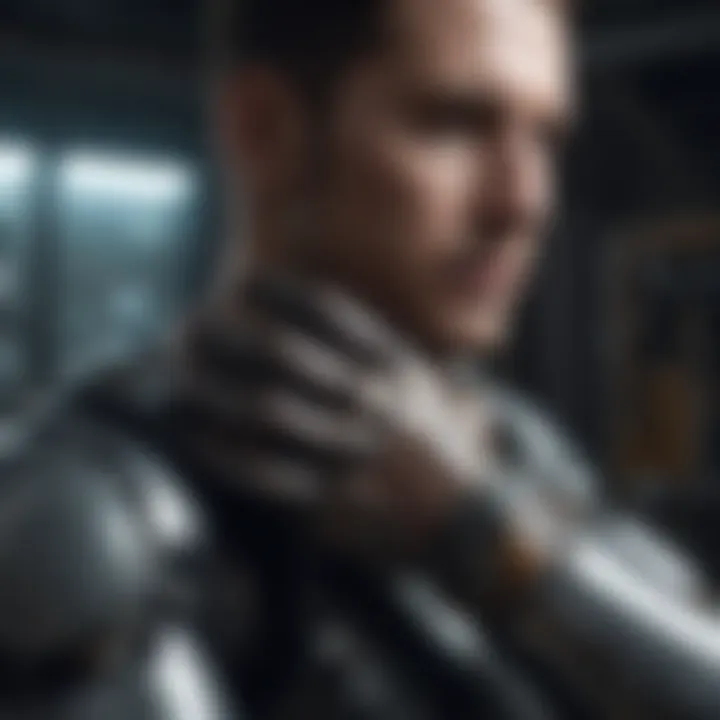
Intro
Prosthetic hands have come a long way, evolving from simple mechanical devices to sophisticated tools that can greatly enhance the quality of life for their users. The rapid advancements in technology and design have paved the way for prostheses that closely mimic the functionality of a natural hand. This development is not just a technical feat; it carries significant implications for the individuals who rely on these devices.
Recent research highlights how innovations in materials, electronics, and neuroscience have changed the way prosthetic hands are designed and function. Users can now experience a sense of control and feedback that was previously unattainable. These enhancements foster greater independence, leading to improvements not only in physical capabilities but also in emotional and psychological well-being.
The growing emphasis on personalized prosthetic solutions caters to a diverse range of needs and preferences. Each user is unique, and thus custom designs are being developed to ensure that their specific functional and aesthetic requirements are met. This adaptability has become an essential element in the evolution of prosthetic technology.
This article delves into the ongoing developments in prosthetic hands, examining the relationship between technology and user experience. It looks at both the technical aspects of design and the social impact these devices have on individuals and communities.
Prelude to Prosthetic Hands
Prosthetic hands have evolved significantly, influencing both technology and individual lives. Their importance lies not only in restoring function but also in enhancing the quality of life for users. The advancements in prosthetic hands reflect a confluence of engineering, medicine, and user-centric design.
As we explore this topic, it becomes clear that the evolution of prosthetic technology has opened new possibilities for millions around the globe. Not only do these devices aim to replicate the intricate movements of the human hand, but they also incorporate advanced features like sensory feedback, which allows users to interact with their environment more effectively.
A closer look at the historical context reveals how far we've come. From rudimentary devices made from wood and metal to modern-day prosthetics that utilize robotics and artificial intelligence, the journey is remarkable.
Historical Context
The history of prosthetic hands dates back to ancient civilizations. The earliest prosthetics were simple and often made from organic materials. For example, wooden hands were used in ancient Egypt. These early devices, while helpful, provided limited functionality and did not allow for intricate movement.
With time, we see significant developments during the Renaissance. Artisans began to craft more advanced models using metal, which introduced a higher level of functionality. However, it was not until the 20th century that modern prosthetic technology began to take shape.
World War I and II prompted innovations as many soldiers returned with limb injuries. This spurred research and investment into better prosthetic technologies. The introduction of body-powered prosthetics marked a turning point, providing users with greater control. In recent decades, the field has experienced unprecedented growth due to advancements such as 3D printing and smart materials.
Definition and Purpose
Prosthetic hands are artificial devices designed to replace lost or missing limbs, specifically the hand. Their primary purpose is functional: to enable users to perform tasks that require grasping and manipulation. However, they also serve emotional and psychological purposes. They can assist individuals in feeling more integrated into society by mimicking the natural appearance of a hand.
The importance of these devices cannot be understated. Here are several key roles prosthetic hands fulfill:
- Restoration of Function: They help users regain mobility and independence.
- Enhancement of Identity: Many designs closely resemble natural hands, helping users feel more confident.
- Facilitation of Social Integration: Improved functionality often leads to increased participation in work and community activities.
Types of Prosthetic Hands
Understanding the types of prosthetic hands is essential to grasp their development, functionality, and user experience. Each category reflects unique technological advancements and caters to specific needs of users. The evolution of these devices has focused on enhancing functionality, comfort, and ease of adaptation. Getting familiar with these classifications allows us to appreciate the intricate design process involved.
Body-Powered Prosthetics
Body-powered prosthetics utilize mechanical systems driven by the user's own movements. This type often features a harness that connects to cables. As the user moves their residual limb or shoulder, these actions translate into functionality in the prosthetic hand, allowing for grasping and releasing objects.
A key advantage of body-powered systems is their lightweight design and lower cost compared to other types. Additionally, they do not require external power sources, which can be a barrier in remote locations. However, users must undergo a period of adjustment to learn how to use these devices effectively. The connection between the user’s movement and the prosthetic operation can often be seamless after sufficient training. This adaptation period can lead to improved engagement in daily activities.
Externally Powered Prosthetics
Externally powered prosthetics, often referred to as myoelectric prosthetics, operate using electrical signals generated by muscle activity. Sensors detect these muscle signals and translate them into movements. For example, when a user flexes a muscle in their residual limb, the sensors activate motors in the prosthetic hand to perform specific actions, such as opening or closing the fingers.
These systems provide a greater range of motion and functionality than body-powered devices. They often mimic natural hand movements more closely, allowing users to perform intricate tasks. However, the complexity of the technology means they are usually more expensive. Maintenance is also crucial since the electrical components can be susceptible to damage or malfunction. Overall, while they require investment, the functional benefits are significant for users.
Hybrid Systems
Hybrid systems combine features of both body-powered and externally powered prosthetics. They allow the user greater flexibility by enabling different modes of operations. For instance, a hybrid device might allow a user to utilize body power for simple tasks while relying on electrical systems for more complex operations.
This duality caters to various user needs and makes transitioning between tasks more efficient. Users may find this particularly beneficial in different environments, where one system may be more practical than the other. The design aims to leverage the advantages of both types, providing an adaptable solution that enhances quality of life. Nevertheless, hybrid systems can be more complex to program and may require more in-depth user training to fully exploit their capabilities.
"The development of diverse prosthetic hands is a testament to the innovative spirit in the field of rehabilitation technology, focusing on user needs and experiences."
Materials Used in Prosthetic Hands
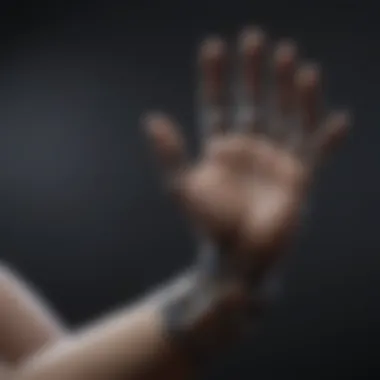
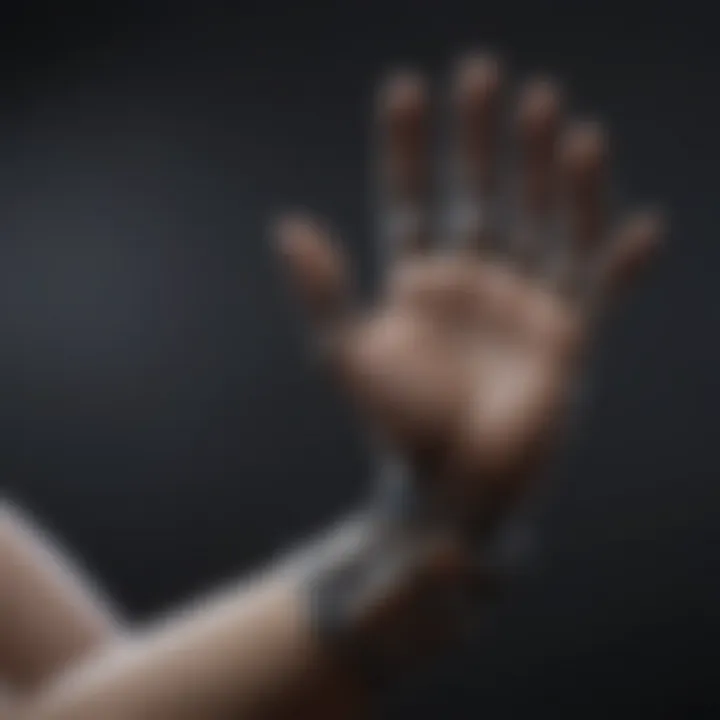
The materials used in prosthetic hands play a crucial role in determining their effectiveness, durability, and comfort for users. The choice of materials directly influences the functionality and for individuals relying on these devices, which means an understanding of these materials is vital. Advances in materials science have allowed for the development of prosthetics that not only look more natural but also mimic the movement and flexibility of a biological hand. This section will delve into traditional materials, advanced composites, and innovative technologies shaping the future of prosthetic hands.
Traditional Materials
Traditional materials for prosthetic hands often include wood, metal, and leather.
- Wood: Historically, wood was a common material due to its availability and ease of manipulation. It can be carved into shapes that resemble the human hand, allowing for basic functions. However, wood is heavy and not very resilient to moisture, leading to limitations in long-term use.
- Metal: Metals such as aluminum and stainless steel provide strength and durability that wood lacks. They support more complex mechanical systems and are essential in body-powered prosthetics where physical strength is necessary. However, metals are often heavy and can lead to user fatigue.
- Leather: Leather is used for straps and coverings. It adds to the comfort and fit of the prosthesis. However, like wood, leather can wear down with time and is less suitable for environments with high moisture.
In summary, while traditional materials offered a starting point for prosthetic design, they present limitations in weight, comfort, and adaptability.
Advanced Composites
Advanced composites offer significant improvements over traditional materials. Composites are materials made from two or more constituent materials with significantly different physical or chemical properties. The resulting composite material has improved characteristics. Common examples include carbon fiber and fiberglass.
- Carbon Fiber: Known for its strength and light weight, carbon fiber is increasingly used in the production of prosthetic hands. It is resistant to corrosion and provides a high strength-to-weight ratio, which enhances both the durability and maneuverability of prosthetic devices.
- Fiberglass: Like carbon fiber, fiberglass is lightweight and can be molded into complex shapes. It is relatively inexpensive and can be produced in various colors, which offers aesthetic versatility. However, it is generally heavier than carbon fiber and may not be suitable for all designs.
The use of advanced composites is an important development in prosthetic design. These materials allow for the creation of lightweight, durable prosthetic hands that can better accommodate the user's needs.
Innovative Technologies
Innovative technologies are at the forefront of prosthetic advancement, leading to new possibilities in both materials and functions. Emerging technologies include smart materials and bio-inspired design.
- Smart Materials: These materials can change their properties in response to environmental stimuli. For example, electroactive polymers can change shape or size when an electric current is applied. This means prosthetic hands could potentially move more fluidly and responsively as they react to user intent in real-time.
- Bio-inspired Design: Nature is a powerful teacher. Some new designs for prosthetics take inspiration from biological systems and organisms. This approach is helping researchers create more functional and adaptable prosthetics that respond more like a natural hand.
Innovative materials and technologies will define the future of prosthetics. As research continues, we can expect a further enhancement in functionality and user experience.
The evolution of materials in prosthetic design is crucial. Users deserve advanced technology that meets their daily needs effectively.
Overall, understanding the different materials used in prosthetic hands is essential for all stakeholders, including designers and users. This knowledge not only informs better design practices but improves overall user satisfaction.
Technological Advances
Technological advances in prosthetic hands have reshaped the landscape of rehabilitation and assistive technologies. This section addresses key innovations that redefine user experience, functionality, and accessibility. With the evolution of materials and mechanisms, prosthetics are becoming more efficient, intuitive, and responsive. Understanding these advances is crucial, as they significantly improve the quality of life for many individuals.
3D Printing in Prosthetics
3D printing technology has revolutionized the production of prosthetic hands. By utilizing additive manufacturing, prosthets can be customized to the users' specific anatomy. Traditional manufacturing is often limited by size and shape, but 3D printing allows for infinite possibilities in design. Customization not only enhances comfort but also boosts the aesthetic appeal.
Moreover, cost-effectiveness is a vital aspect. 3D printing can reduce production costs significantly, making prosthetics more accessible to a broader population.
Benefits of 3D printing include:
- Customization: Tailored to individual needs
- Reduced Costs: Affordable manufacturing
- Rapid Prototyping: Speedy production turnaround
Overall, 3D printing represents a substantial shift towards personalized care in prosthetics.
Sensor Integration
Sensor integration is another critical development in the sphere of prosthetic technology. Sensors enable prosthetic hands to mimic the natural movement of the human limb more accurately. This advancement enhances the overall user experience by providing feedback mechanisms that align with the user's intentions. Sensors can monitor pressure, grip strength and even temperature, allowing for more nuanced control.
The implications of sensor integration are profound. Users gain a level of control that approaches natural limb functionality, fostering a sense of agency. Additionally, improved feedback systems can lead to better training outcomes during rehabilitation.
Points to consider include:
- Enhanced Control: More intuitive movements
- Real-Time Feedback: Adaptive responses to user action
- Improved Safety: Reduces the risk of dropping objects or injuries
Integrating sensors into prosthetic designs is a game changer for individuals looking to regain mobility.
Robotics and AI


Robotics and artificial intelligence (AI) have a transformative impact on prosthetic hands. By incorporating robotic mechanisms, prosthetic devices can perform complex functions that were previously unattainable. AI allows these devices to learn from user habits and adapt over time.
The combination of robotics and AI contributes to greater autonomy for the users. They can perform daily tasks more efficiently and with less assistance. AI-enhanced prosthetics are becoming increasingly smart and responsive, providing users with detailed analytics on their usage patterns.
Key considerations regarding robotics and AI include:
- Enhanced Functionality: Ability to perform complex movements
- User Adaptability: Learns individual habits over time
- Data Utilization: Gathers insights for better performance
The integration of robotics and AI signifies a forward leap in prosthetic technology, creating tools that empower and elevate the quality of life for users.
"Technological advances in prosthetics showcase the intersection of engineering, design, and human adaptation, offering profound implications for personal empowerment and societal change."
User Experience and Adaptation
User experience and adaptation are crucial aspects in the development and use of prosthetic hands. The design of prosthetics goes beyond mere functionality; it must ensure that users can integrate the device seamlessly into their daily lives. A focus on user experience prioritizes the needs, desires, and realities of individuals utilizing these advanced technologies.
Psychosocial Impact
The psychosocial effects of using a prosthetic hand can be profound. Users often confront intense emotions related to loss and identity. Feelings of isolation may emerge, stemming from societal perceptions and personal experiences. It is important for designers to consider these factors when creating prosthetic devices. A well-designed prosthetic should not only restore functionality but also enhance self-esteem.
- Emotional Well-being: The ability to perform daily tasks with a prosthetic hand can lead to significant improvements in mental health. Users can engage more fully with their environment, fostering social connections and community involvement.
- Identity Reconstruction: For many individuals, prosthetic devices can symbolize a new chapter in life rather than merely a loss. Successful adaptation often involves redefining one’s identity and embracing new capabilities.
"The art of prosthetics is not only about replacing lost limbs but also about integrating into society and improving the quality of life."
Training and Rehabilitation
Training and rehabilitation are essential for effective adaptation to prosthetic hands. Proper preparation can greatly influence the user's ability to operate the device efficiently, ensuring that they gain confidence in their new capabilities. Programs must be customized to meet the unique needs of each individual based on their goals, backgrounds, and experiences.
- Skill Development: Users need to learn how to manipulate their prosthetic hands. This includes practicing gripping various objects and executing fine motor tasks. Rehabilitation specialists play a vital role in facilitating this skill-building process.
- Physical Therapy: Many users benefit from physical therapy as they adapt to their prosthetics. Therapists can guide them through tailored exercises designed to improve muscle strength and coordination. This can reduce the risk of injury and enhance overall functionality.
- Psychological Support: Mental adjustment is equally vital. Support groups and counseling can help users navigate the emotional complexities that arise from adapting to prosthetic hands. Sharing experiences can foster resilience and openness throughout the recovery journey.
Regulatory and Ethical Considerations
The field of prosthetic hands is not only defined by technological innovation but also by significant regulatory and ethical considerations. These elements are crucial for ensuring that prosthetic devices are safe, effective, and equitably accessible. The regulatory framework establishes the standards and guidelines that manufacturers must follow, while ethical considerations shape the discourse around the responsibilities that come with advanced prosthetic technology.
Approval Processes
Understanding the approval processes is vital in the development of prosthetic hands. In many countries, regulatory bodies such as the Food and Drug Administration (FDA) in the United States or the European Medicines Agency (EMA) in Europe oversee the approval of prosthetics. These organizations ensure that any device introduced into the market meets strict safety and efficacy criteria.
The approval journey typically involves extensive clinical trials, where the device must undergo rigorous testing. Manufacturers submit their findings, which include both the performance of the prosthetic and any potential risks associated with its use. The approval process can be lengthy, sometimes taking several years before a product becomes available.
Key steps in the approval process include:
- Preclinical Testing: Before human trials, prototypes are tested in lab settings to assess mechanical stability and safety.
- Clinical Trials: Human subjects use the prosthetic under controlled conditions, gathering detailed performance and safety data.
- Submission of Findings: Data is presented to regulatory bodies for review and evaluation.
- Post-Market Surveillance: After approval, ongoing monitoring is conducted to capture any long-term issues.
These measures are critical to protect users and ensure that innovations do not compromise safety.
Ethical Implications of Prosthetic Technology
The ethical implications surrounding prosthetic technology extend beyond user safety and touch on broader societal impacts. A notable concern is the accessibility of advanced prosthetics, which can often be prohibitively expensive. This raises questions regarding equal access to necessary medical devices.
There is also an ethical discussion about the psychological effects of using prosthetic hands. For some users, while prosthetics can offer increased functionality, they might struggle with emotional acceptance or identity issues. The experience of adapting to a prosthesis can vary widely among individuals; thus, it invites a nuanced dialogue on support systems and mental health resources.
Furthermore, advancements like AI integration in prosthetics bring additional ethical dilemmas. As machines become more autonomous, questions about privacy, data security, and user consent emerge. These discussions must consider the balance between technological benefits and the potential risks associated with highly integrated systems.
"The advent of advanced prosthetic technology demands a dialogue that transcends technical specifications and delves deep into the ethical and social implications of its use."
In summary, navigating the regulatory and ethical landscape of prosthetic hands is essential for fostering innovation while ensuring safety, accessibility, and respect for the users' diverse experiences.
Future Directions in Prosthetic Development
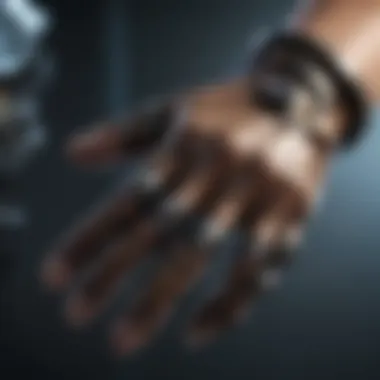
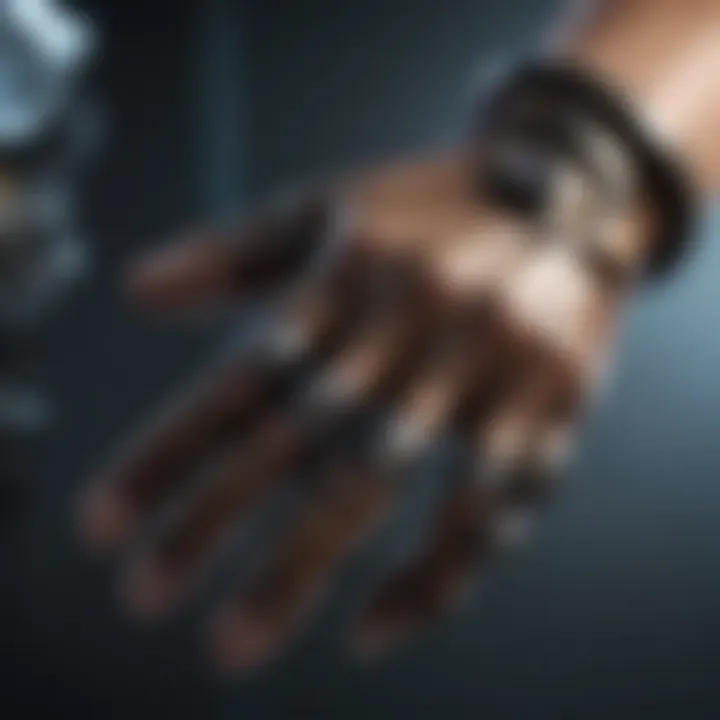
Prosthetic technology is at a critical juncture, and its future development is essential not just for the enhancement of user functionality but also for improving overall quality of life for those in need. As innovations progress, understanding the implications of advancements in design and functionality is crucial. This section will explore two key areas: current trends shaping these developments and the broadening accessibility to prosthetic hands.
The exploration of future directions can help guide researchers, professionals, and stakeholders in making informed decisions and policies that can facilitate growth in this field. Not all innovations will have equal impact, so evaluating the potential benefits is vital. Additionally, the ethical considerations surrounding these advancements cannot be understated, as they affect user trust and societal acceptance.
Trends in Design and Functionality
Evolving technology fosters a continuous transformation in the design and functionality of prosthetic hands. The integration of various technologies, such as biomaterials, electronics, and software, has led to prosthetics that not only mimic natural movement but also enhance the capabilities of the user.
Key Trends:
- Personalization: Customizable prosthetic hands allow for individual preferences regarding function and appearance. This encourages a sense of identity and ownership for users.
- Smart Prosthetics: With the inclusion of sensors and AI, smart prosthetic hands can adapt to the environment. These devices are capable of analyzing surrounding objects and adjusting grip strength and movements accordingly.
- Lightweight Materials: Using advanced materials that are light yet durable increases comfort and usability. More users can engage in daily activities without physical fatigue.
Prosthetics are increasingly designed to be more than just functional; they are becoming a direct extension of the user’s body and experience. This shift toward integrated and responsive technology indicates a growing understanding of the diverse needs of individuals. By focusing on user experience during the development phase, designers can better meet the demands of those requiring prosthetic solutions.
Global Access to Prosthetic Hands
Access to prosthetic technologies is a pressing global concern. Disparities in the availability of prosthetic hands exist largely due to economic, social, and institutional factors. Ensuring that individuals across varied backgrounds have access to advanced prosthetics remains a significant challenge.
Challenges to Global Access:
- Cost: High production costs of advanced prosthetics often lead to unaffordability, especially in under-resourced communities.
- Awareness and Education: Limited awareness of available technologies inhibits uptake. Many potential users remain uninformed about options that could significantly enhance their quality of life.
- Infrastructure: The lack of proper healthcare systems in low-income regions limits access to necessary evaluations and follow-up care.
Efforts to improve global access to prosthetic hands must prioritize education and training for healthcare professionals, along with community outreach programs. Collaborations with non-profit organizations can also play a key role in bringing these technologies to underserved populations.
"Addressing the accessibility gap in prosthetic technology is crucial for empowering individuals and transforming lives on a global scale."
Case Studies
Case studies play a crucial role in understanding the practical applications and implications of prosthetic hands. They provide real-world examples of how advancements in technology have positively impacted users. By examining specific instances, we can derive significant insights into both the successes and failures of development in this field. This section aims to explore individual experiences, shedding light on the effectiveness and potential shortfalls of different prosthetic designs.
Success Stories
Success stories illustrate how advancements in prosthetics have transformed lives. Take for instance the case of Claire, who received a bionic hand equipped with advanced sensors that provide sensory feedback. With this technology, she can feel the texture of objects, making daily tasks more intuitive and fulfilling. This experience emphasizes how success in design directly correlates with user satisfaction.
In another inspiring example, James, a veteran, received a prosthetic hand that integrates seamlessly with his natural movements thanks to robotics. His story highlights the importance of adaptive technology in promoting independence and functionality. These narratives offer a glimpse into the potential of modern prosthetics. They underscore how thoughtful design and user-centric approaches can mitigate some issues faced by amputees, reshaping their everyday interactions.
Lessons Learned from Failures
While many success stories abound, it is imperative not to overlook the lessons derived from failures. One notable case involved a high-tech prosthetic hand designed for a child, which promised exceptional mobility. However, the technology proved too advanced for the user’s needs, resulting in frustration and abandonment of the device. This case illustrates how important it is to tailor technology to the user’s specific requirements, rather than a one-size-fits-all approach.
Another failure worth mentioning occurred in a pilot study of a new material that was supposed to be lighter and more durable. Unfortunately, after extensive use, the material began to deteriorate, leading to complications and discomfort for the user. Such lessons are vital for manufacturers and designers, as they highlight the need for rigorous testing and user feedback during the iterative design process.
These narratives collectively reinforce the understanding that while innovation is essential, it must be matched with practical considerations and user insights. This balance will ultimately dictate the success of future prosthetic hand developments.
"Understanding users through case studies provides invaluable insight that can guide future designs, ensuring they meet realistic needs and conditions."
The ongoing analysis of both triumphs and setbacks within the realm of prosthetic hands is fundamental to advancing the industry. Each case study contributes to a growing repository of knowledge, aiding researchers, developers, and healthcare professionals in their efforts to create more effective solutions.
The End
In this concluding section, we reflect on the integral themes woven throughout the article about prosthetic hands. The advancements in technology reveal a landscape that is increasingly accessible and tailored to individual needs. It is essential to remember that prosthetic hands are not merely tools; they represent power, agency, and a pathway to independence for users. Each development in design and functionality brings with it not just technical prowess but also profound implications for the lives it touches.
Summary of Key Insights
Throughout this article, several key insights emerge regarding the field of prosthetics. Firstly, the evolution from basic designs to sophisticated body-powered and externally powered prosthetics exemplifies the growing understanding of user needs. Each type offers distinct benefits, allowing users to select prosthetics that best align with their lifestyles and activities.
Secondly, the use of advanced materials and innovative technologies, including 3D printing and sensor integration, has revolutionized the field, making prosthetics lighter, more functional, and more customizable. This customization significantly enhances the user experience, which includes both the physical adaptability of the prosthetic and the emotional resonance it holds for the user.
Moreover, the exploration of ethical considerations surrounding prosthetic technology underlines the importance of developing inclusive practices in design and access. As innovation continues, it is vital to ensure that these technologies are available to diverse populations, fostering equality in access to such transformative tools.
Implications for the Future
Looking forward, the implications of advancements in prosthetic hands are profound. Emerging trends in design and functionality point towards a future where prosthetics become even more integrated into the user’s life. Robotic systems powered by artificial intelligence may offer real-time adaptations to the user’s environment, potentially improving ease of use and functionality.
Global access to high-quality prosthetic hands remains a critical area needing attention. Organizations and governments must work collaboratively to bridge gaps in access, making these life-changing devices widely available regardless of economic status or geographical location.
Ultimately, the intersection of technology, user experience, and ethical practice shapes the future of prosthetics. Continued research and innovation promise not only to enhance physical capabilities but also to enrich the lives of users, affirming the significance of prosthetic hands within both personal and societal contexts.







